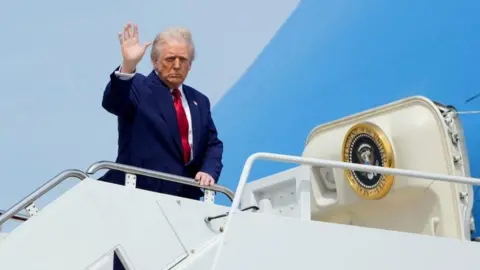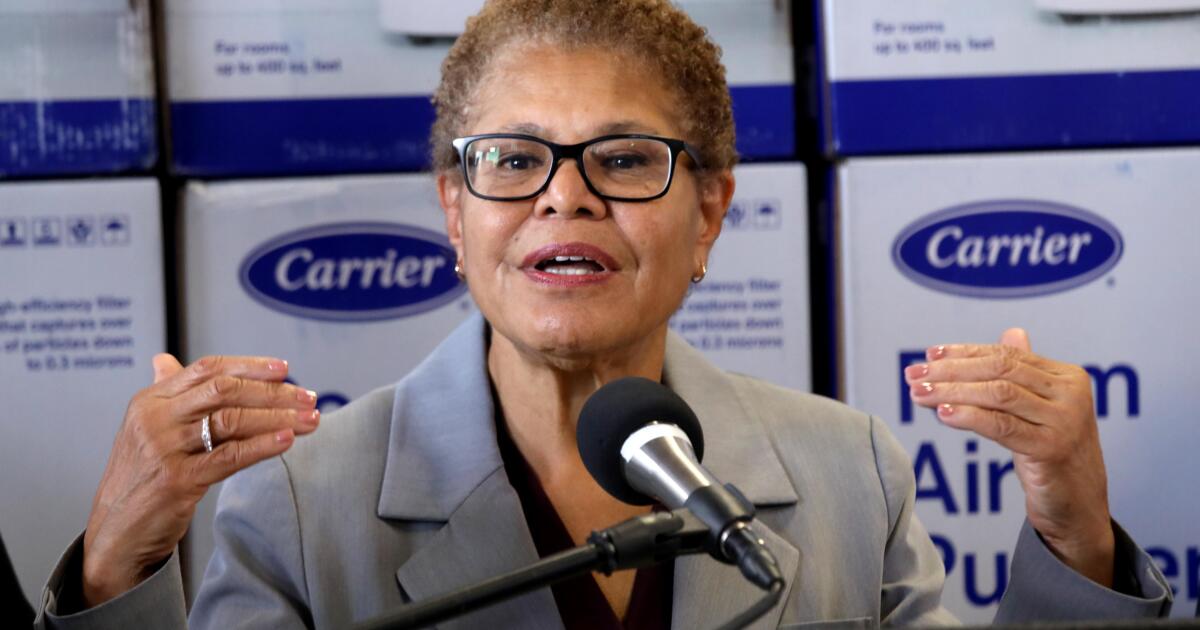Trump Administration’s Shifting Stance on Russia: A Rollercoaster Relationship
by Archyde News team
A Thorny Relationship
The relationship between the U.S. adn Russia under the Trump administration was anything but straightforward. From potential collaboration on global issues to stark disagreements over Ukraine, the dynamic continuously evolved, leaving many observers both in the U.S. and abroad struggling to keep up.
Initially, there were signs of a potential thaw in relations. However, this optimism was quickly tempered by events in Ukraine and domestic political pressures within the U.S. The constant shifts in rhetoric and policy created a sense of uncertainty, making it difficult to predict the future trajectory of U.S.-Russia relations.
The Ukraine Factor
Central to the fluctuating relationship was the situation in Ukraine. When Vladimir Putin reportedly considered replacing President Volodymyr Zelensky’s administration with “external governance” under the UN, Trump’s reaction was telling. Trump commented on March 30th, “I was disappointed in a certain way, some of the things that were said over the last day or two having to do with Zelensky. Because when [Putin] considers zelensky not credible, he’s supposed to be making a deal with him. Whether you like him or you don’t like him.” this statement underscored the complexities of Trump’s approach, balancing a desire for negotiation with concerns about Putin’s actions.
Mixed Signals and Economic Pressure
Adding another layer of complexity, former President of Finland, Alexander Stubb, after playing golf with Trump, told the Guardian newspaper: “I think America, and my sense is also the president of the United States, is running out of patience with Russia.” This sentiment was seemingly reinforced by Trump’s threat to impose secondary tariffs of up to 50% on Russian oil exports if Russia was perceived as stalling on a Ukraine peace deal. This is a classic example of using economic leverage, similar to how the U.S. has previously used tariffs against China to address trade imbalances.
Furthermore, a bipartisan group of U.S. senators proposed even harsher measures, including a bill that would impose a staggering 500% secondary tariff on countries purchasing Russian oil, gas, and other resources. Such a move would have significant global implications,potentially disrupting energy markets and impacting countries heavily reliant on Russian resources,such as some European nations.
These proposed tariffs reflect a growing sentiment within the U.S. political establishment that stronger action is needed to deter Russian aggression and ensure a peaceful resolution to the conflict in ukraine. However, the potential economic consequences of such measures remain a subject of debate and concern.
Russian Media’s Changing Tone and Internal Conflicts
Initially, the Russian press had welcomed what they perceived as a potential improvement in relations between Moscow and Washington. the Nezavisimaya Gazeta newspaper even ran a headline stating that U.S. and Russian officials had “started speaking the same language.” However, this optimism proved short-lived.
The tune quickly changed. The Moskovsky Komsomolets newspaper accused the Trump administration of “administrative insanity… inexperience… immaturity.” The publication criticized the administration’s “bragging and arrogance” and “its desire to declare ‘huge breakthroughs’ when the first steps have barely been taken.”
Similarly, Komsomolskaya Pravda declared: “On ukraine talks, Donald’s mood changes as frequently enough as the wind.” These sharp criticisms signaled a growing frustration within the Russian media and political establishment with the perceived unpredictability of the Trump administration’s foreign policy.
Sanctions Waivers and Diplomatic Overtures
Despite the threats and criticisms,the Trump administration’s actions frequently enough presented a mixed picture. While levying sweeping tariffs, Russia was notably absent from the list. Simultaneously, U.S. authorities granted a sanctions waiver to Kirill Dmitriev, Putin’s foreign investment envoy, allowing him to travel to Washington for talks. This move suggested a willingness to engage in dialogue, even as tensions remained high.
These conflicting signals underscore the complex and often contradictory nature of international relations. While public rhetoric might potentially be strong, backchannel communications and diplomatic overtures frequently enough continue behind the scenes, seeking to find common ground and manage potential conflicts.
Ultimatums and Allied Pressure
Adding to the pressure, than-U.S. Secretary of State Marco Rubio, speaking at a NATO foreign ministers meeting in Brussels, issued a firm warning: “President Trump’s not going to fall into the trap of endless negotiations about negotiations. We will know soon enough, in a matter of weeks, not months, whether Russia is serious about peace or not.”
Rubio continued, “If they’re not, then we’ll have to re-evaluate where we stand and what we do moving forward about it.” This ultimatum was echoed by America’s NATO allies. UK Foreign Secretary David Lammy stated that Putin “continues to obfuscate, continues to drag his feet.” “He could accept a ceasefire now, he continues to bombard Ukraine… We see you, Vladimir Putin, we know what you are doing,” Lammy added. These statements reflect a united front among Western allies in demanding concrete action from Russia to de-escalate the conflict in Ukraine.
Uncertainty and Economic Engagement
Amidst the diplomatic maneuvering, reports emerged that Trump and Putin were considering another phone call, only for the White House to reportedly change its mind. The Kremlin confirmed that no conversation was planned. This further highlighted the volatile nature of dialogue between the two countries.
Adding to the complexities, american companies were reportedly planning to participate in the St. Petersburg Economic Forum. This suggests that despite political tensions, economic ties between the U.S. and Russia remained a significant factor, reflecting the intertwined nature of global commerce.
A Glimpse from the Past, Echoes in the Future
Much like the historical complexities of U.S.-Soviet relations during the Cold War, the Trump era’s approach to Russia presented a puzzling mix of aggression and potential collaboration. Instances such as the Strategic Arms reduction Treaty (START) negotiations during the Cold War echo in today’s context, where arms control and strategic stability remain critical areas of engagement despite broader disagreements. The key questions remains, can the U.S. effectively pressure Moscow to end the war, and will the Kremlin allow itself to be pressured?
| U.S. Action | Russian Response | Implications |
|---|---|---|
| Threatened tariffs on Russian oil exports | Initial openness, followed by accusations of “administrative insanity” in Russian media. | Showed potential economic leverage, but also highlighted growing distrust. |
| Sanctions waiver for Putin’s envoy | Dmitriev traveled to Washington for talks. | Signaled a willingness to engage in dialogue despite tensions. |
| Ultimatum from Secretary Rubio | Kremlin denied planned phone call with trump. | Demonstrated a firm stance but also a breakdown in communication. |
Key Questions Remain
The critical question, then and now, remains: is the U.S.prepared to exert the necessary pressure on Moscow to end the war in Ukraine? And, crucially, would the Kremlin be amenable to such pressure? These are the questions that continue to shape the geopolitical landscape as Russia’s war on Ukraine persists. Only time will reveal the answers and the long-term consequences of this complex relationship.
What were the implications of the Trump administration’s mixed signals and inconsistent policies on US-Russia relations, according to Dr. Petrova?
Interview: Navigating the Trump Administration’s Complex Russia Policy
Introduction
Archyde News: Welcome, everyone. Today, we have Dr. Elena Petrova, a Senior Fellow at the Institute for International relations, to discuss the Trump administration’s ever-shifting stance on Russia. Dr. Petrova, thank you for joining us.
Dr. Petrova: Thank you for having me.
The Shifting Sands of Diplomacy
Archyde News: The relationship was certainly a rollercoaster.Initial optimism, then setbacks. Can you elaborate on the central role of the situation in Ukraine in this dynamic?
Dr. Petrova: Absolutely. The Ukraine conflict became the focal point. When taking into consideration the possibility of the United Nations getting more directly involved with Ukraine, the administration’s reaction, and specifically President Trump’s comments regarding President Zelensky’s credibility, highlighted the core tension: how to negotiate while dealing with concerning actions from Russia.
Economic Leverage and Mixed Signals
Archyde News: The administration used economic leverage with threatened sanctions. How effective was that? Were the mixed signals from the U.S.helpful?
dr. Petrova: The mere threat of tariffs,along with the sanctions waivers,created a confusing picture. On the one hand, the administration was threatening critically important economic penalties, and conversely, they were allowing communication. This inconsistency made it challenging for both sides to trust each other and find a resolution.
Russian Media’s Perspective
Archyde News: How did the Russian media react to these shifts, and what did that reveal about their perception of the Trump administration’s policies?
Dr. Petrova: Initially, there was hope for improved relations, as several Russian media outlets started praising a better relationship between washington and Moscow.However,the tone shifted rapidly. The administration was criticized for inconsistent policies and “administrative insanity.”
ultimatums and Allied Pressure
Archyde News: The U.S. wasn’t the only one applying pressure. NATO allies issued warnings, too. What role did this united front play in the broader strategy?
Dr. Petrova: The unified front from NATO was meant to send a clear message of resolve to Russia. The allies demanded Russia to de-escalate the conflict.The ultimatum served to increase pressure on Moscow, making it more about actions and less about words.
The Long Game
Archyde News: Considering all of this, Dr. Petrova, what are the enduring questions relating to Russia’s war on Ukraine and the involvement of the U.S. and other nations?
Dr. Petrova: The core issue remains: how much pressure will the United States and its allies exert? And will those actions be enough to influence the Kremlin’s decisions? this is a key issue that will continue to take shape for the foreseeable future.
Conclusion
Archyde News: Dr.Petrova, thank you for your insights. in your view,what lessons can be learned from these interactions in relation to the role of tariffs in international relations?
Dr. petrova: We saw the deployment of multiple tariffs. Tariffs act as economic pressure,but they also must be delivered with a strategic plan including clear goals in order to be affect. Are tariffs likely to be a tool in the future? Yes, but with proper planning.




:watermark(https://f.pmo.ee//logos/4238/c14433e7c257b86e167cf144389f5071.png,-2p,-2p,0,18,none):format(webp)/nginx/o/2025/04/17/16784304t1hc2cf.png)



